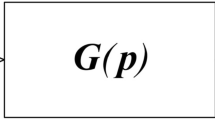Abstract
Symbolic analysis is a powerful tool which accelerates the electronic design process by providing insight about the behavior of a circuit. Recently, the analysis and synthesis of electronic circuits with nullors have received considerable attention. This is due to the fact that nullors are very flexible and versatile active elements.
Very efficient analysis methods, such as nodal analysis, Coates flow graphs, and two-graphs are proposed in the literature and are widely used. It has arguably been reported (because it does not generate vanishing terms in the symbolic network functions) that the last cited analysis method may be considered as the most promising. Actually, using the two-graph method, symbolic transfer functions can be calculated via either signal flow graphs and Mason’s formula, without any restriction on the type of the sources (dependent and independent), or the spanning tree enumeration method for RLC circuits with nullor equivalent circuits of independent voltage sources and all types of controlled sources.
In this paper we propose a new method for symbolic analysis of circuits with nullors using the two-graph method in both versions, i.e. signal flow graphs and enumeration of spanning trees. This new method helps us to see distinctly the relationships between various circuit components (for the method using the signal flow graph) and enables us to calculate the symbolic network functions without the excess terms (for the method using the enumeration of spanning trees).















Similar content being viewed by others
References
I.N. Asenova, An approach for determination of modified coates signal-flow graphs, in The International Conference ELEKTRO, 23–24 May, Zilina, Slovak Republic (2006)
I.N. Asenova, Calculation of first, second-order and multiparameter symbolic sensitivity of active circuit by using nullor method and modified coates flow graph. Int. J. Microelectron. Comput. Sci. 2(4), 129–135 (2011)
L.T. Bruton, RC-Active Circuits: Theory and Design (Prentice-Hall, New York, 1980)
R. Cabeza, A. Carlosena, On the use of symbolic analyzers in circuit synthesis. Analog Integr. Circuits Signal Process. 25, 67–75 (2000)
H. Carlin, Singular network elements. IEEE Trans. Circuit Theory 11(1), 67–72 (1964)
S.P. Chan, Introductory Topological Analysis of Electrical Networks (Rinehart & Winston, New York, 1976)
D. Comer, D. Comer (eds.), Advanced Electronic Circuit Design (Wiley, New York, 2003)
C.A. Desoer, E.S. Kuh, Basic Circuit Theory (McGraw-Hill, New York, 1969)
B.D. Donevski, G.A. Nenov, Application of Signal-Flow Graphs in the Electron Circuits Analysis and Synthesis (Technika, Sofia, 1976). (in Bulgarian)
M. Fakhfakh, M. Pierzchala, Active filter design using a two-graph based transformation technique, in Integrated Circuits for Analog Signal Processing, ed. by E. Tlelo-Cuautle (Springer, Berlin, 2013)
H.N. Gabow, E.S. Myers, Finding all spanning trees of directed and undirected graphs. SIAM J. Comput. 7(3), 280–287 (1978)
D.G. Haigh, A method of transformation from symbolic transfer function to active-RC circuit by admittance matrix expansion. IEEE Trans. Circuits Syst. I, Regul. Pap. 53(12), 2715–2728 (2006)
D.G. Haigh, T.J.W. Clarke, P.M. Radmore, Symbolic framework for linear active circuits based on port equivalence using limit variables. IEEE Trans. Circuits Syst. I, Regul. Pap. 53(9), 2011–2124 (2006)
P.-M. Lin, Symbolic Network Analysis (Elsevier, Amsterdam, 1991)
S.J. Mason, H.J. Zimmermann, Electronic Circuits, Signals and Systems (Wiley, New York, 1960)
W. Mayeda, Graph Theory (Wiley, New York, 1972)
M. Pierzchala, M. Fakhfakh, An open environment for calculating s-expanded symbolic network functions, in The International Workshop on Symbolic and Numerical Methods, Modeling and Applications to Circuit Design (SM 2 ACD), 7–8 October, Erfurt, Germany (2008)
M. Pierzchala, M. Fakhfakh, Novel structures of RC-active filters for tapped capacitor resonant circuits, in The European Conference on Circuit Theory and Design (ECCTD), Antalya, Turkey (2009)
M. Pierzchala, M. Fakhfakh, Generation of active inductor circuits, in The IEEE International Symposium on Circuits and Systems (ISCAS), 30 May–2 June, Paris, France (2010)
M. Pierzchala, M. Fakhfakh, Transformation of LC-filters to active RC-circuits via the two-graph method. Microelectron. J. 42(8), 999–1005 (2011)
M. Pierzchala, B. Rodanski, Analysis and synthesis of electronic circuits by the two-graph method, in Design of Analog Circuits Through Symbolic Analysis, ed. by M. Fakhfakh, E. Tlelo-Cuautle, F.V. Fernandez (Bentham Science, Sharjah, 2012)
C. Sánchez-López, F.V. Fernández, E. Tlelo-Cuautle, S.X.-D. Tan, Pathological element-based active device models and their application to symbolic analysis. IEEE Trans. Circuits Syst. I, Regul. Pap. 58(6), 1382–1395 (2011)
C. Sánchez-López, Modeling active devices with nullor for analog signal processing, in Design of Analog Circuits Through Symbolic Analysis, ed. by M. Fakhfakh, E. Tlelo-Cuautle, F.V. Fernandez (Bentham Science, Sharjah, 2012)
C. Sánchez-López, Pathological equivalents of fully-differential active devices for symbolic nodal analysis. IEEE Trans. Circuits Syst. I, Regul. Pap. 60(3), 603–615 (2013)
C. Sánchez-López, B. Cante-Michcol, F.E. Morales-López, M.A. Carrasco-Aguilar, Pathological equivalents of CMs and VMs with multi-outputs. Analog Integr. Circuits Signal Process. 75(1), 75–83 (2013)
C. Sánchez-López, F.V. Fernández, E. Tlelo-Cuautle, Generalized admittance matrix models of OTRAs and COAs. Microelectron. J. 41(8), 502–505 (2010)
C. Sanchez-Lopez, E. Martinez-Romero, E. Tlelo-Cuautle, Symbolic analysis of OTRAs-based circuits. J. Appl. Res. Technol. 9(1), 69–80 (2011)
J. Starzyk, E. Sliwa, Upward topological analysis of large circuits using directed graph representation. IEEE Trans. Circuits Syst. CAS-31, 410–414 (1984)
E. Tlelo-Cuautle, C. Sanchez-Lopez, F. Sandoval-Ibarra, Computing symbolic expressions in analog circuits using nullors. Comput. Sist. 9(2), 119–132 (2005)
J. Vlach, K. Singhal, Computer Methods for Circuits Analysis and Design (Kluwer Academic, Norwel, 1993)
F. Yan, CMOS Active Inductors and Transformers: Principle, Implementation, and Applications (Springer, Berlin, 2008)
Author information
Authors and Affiliations
Corresponding author
Rights and permissions
About this article
Cite this article
Pierzchała, M., Fakhfakh, M. Symbolic Analysis of Nullor-Based Circuits with the Two-Graph Technique. Circuits Syst Signal Process 33, 1053–1066 (2014). https://doi.org/10.1007/s00034-013-9696-y
Received:
Revised:
Published:
Issue Date:
DOI: https://doi.org/10.1007/s00034-013-9696-y




